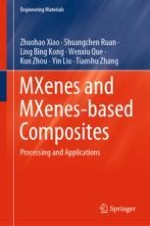2020 | Book
MXenes and MXenes-based Composites
Processing and Applications
Authors: Zhuohao Xiao, Dr. Shuangchen Ruan, Dr. Ling Bing Kong, Prof. Dr. Wenxiu Que, Prof. Kun Zhou, Yin Liu, Dr. Tianshu Zhang
Publisher: Springer International Publishing
Book Series : Engineering Materials
